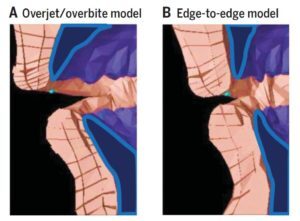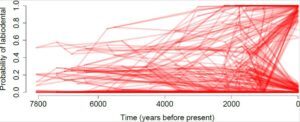
Contradicting the theory that the range of human sounds has remained fixed throughout human history, a new study reports that sounds such as “f” and “v”, both common in many modern languages, are a relatively recent development – one brought about by diet-induced changes in the human bite. These changes resulted in new sounds in languages all over the world, the study reports. The researchers say their work reveals how the influence of biological conditions on the development of sounds has been underestimated. Human speech is incredibly diverse, ranging from ubiquitous sounds like “m” and “a” to the rare click consonants in some languages of Southern Africa. However, this range of sounds is generally thought to have been established with the emergence of the Homo sapiensaround 300,000 years ago – independent of any changes in human biology after that time. Inspired by an observation made by linguist Charles Hockett in 1985, that languages that foster sounds like “f” and “v” are often found in societies with access to softer foods, Damian Blasi and colleagues undertook a detailed interdisciplinary investigation of how speech sounds were shaped by changes in human bite as diet changed, particularly as humans transitioned away from hunting and gathering. Through efforts including detailed biomechanical simulations of different human orofacial structures, Blasi and colleagues showed that a shift in adult tooth structure that kept adult’s upper teeth slightly more in front as compared to the lower teeth – a shift that correlated with the rise of food processing technology such as industrial milling – led to the rise of a new class of speech sounds. This class of sounds, now found in half of the world’s languages, is known as labiodentals – or sounds made by touching the lower lip to the upper teeth, for example when pronouncing the letter “f”. Use of labiodentals increased dramatically only in recent millennia, the authors say, following the development of agriculture. The researchers say their findings suggest language is shaped by culturally-induced changes in human biology to a previously underrecognized extent.
_________________________

The difference between a Paleolithic edge-to-edge bite (left) and a modern overbite/overjet bite (right).
Tímea Bodogán
_________________________

Biomechanical model of producing an “f” sound with an overbite/overjet (left) vs an edge-to-edge bit
(right). Scott Moisik
_________________________

Increasing probability of labiodentals in the Indo-European language family. Balthasar Bickel
_________________________
This research appears in the 15 March 2019 issue of Science.
Article Source: Science news release. Science is published by AAAS, the nonprofit science society.




